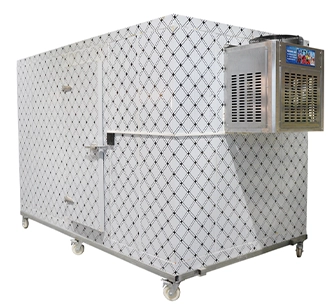custom cold storage room insulation
Understanding Custom Cold Storage Room Insulation
In today's world, preserving perishable items is crucial for businesses ranging from food service to pharmaceuticals. One essential aspect of maintaining the integrity of temperature-sensitive products is the insulation used in custom cold storage rooms. Effective insulation not only helps maintain a stable internal temperature but also contributes to energy efficiency and cost savings over time.
When designing a custom cold storage room, several factors must be considered to ensure that the insulation is adequate for the specific needs of the operation. The primary goal is to prevent heat transfer, which can lead to fluctuations in temperature that may compromise the quality of stored items. This is where the insulation materials and their properties come into play.
The most commonly used insulation materials in cold storage rooms include polyurethane foam, polystyrene, and fiberglass. Polyurethane foam is favored for its high R-value, meaning it provides excellent thermal resistance in a relatively thin layer. This is particularly beneficial in spaces where maximizing storage capacity is important. Polystyrene, on the other hand, is known for its moisture resistance and durability, making it suitable for cold storage applications where humidity levels may be a concern. Fiberglass insulation, while less effective than the previous two in terms of R-value, is non-combustible and can be used in various temperature-controlled environments.
custom cold storage room insulation

In addition to selecting the right insulation material, the installation process is crucial for optimal performance. Air gaps, poor seals, and insufficiently insulated doors can significantly reduce the efficiency of the cold storage room. Consequently, it is vital to ensure that all seams, joints, and penetrations are sealed using appropriate caulking or tape. High-quality weather stripping should be employed on doors to prevent warm air from entering and cold air from escaping.
Moreover, it is essential to consider the design of the cold storage room itself. Custom solutions should include features that facilitate airflow and temperature management. For instance, installing vapor barriers can help control moisture levels, further protecting the products and the integrity of the insulation. Additionally, incorporating insulation into the walls, ceiling, and floors ensures a comprehensive approach to temperature control.
Regular maintenance and checks are necessary to uphold the efficiency of the insulation over time. Insulation can degrade or become damaged, leading to increased energy costs and potential loss of product. Therefore, scheduled inspections are essential to identify and address any issues early.
In conclusion, custom cold storage room insulation plays a critical role in the successful operation of businesses that rely on temperature-sensitive products. By selecting the right materials, ensuring proper installation, and committing to routine maintenance, companies can enhance their storage capabilities and protect their valuable inventory. As the demand for cold storage continues to grow, investing in effective insulation solutions will be a key factor in maintaining product quality and operational efficiency.
















































































































